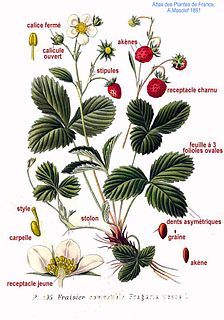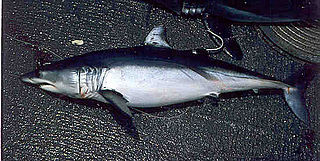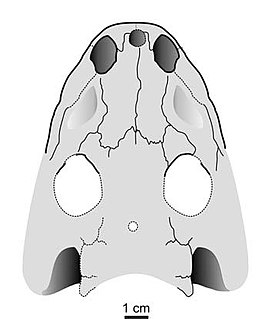
An eared seal or otariid or otary is any member of the marine mammal family Otariidae, one of three groupings of pinnipeds. They comprise 15 extant species in seven genera and are commonly known either as sea lions or fur seals, distinct from true seals (phocids) and the walrus (odobenids). Otariids are adapted to a semiaquatic lifestyle, feeding and migrating in the water, but breeding and resting on land or ice. They reside in subpolar, temperate, and equatorial waters throughout the Pacific and Southern Oceans and the southern Indian and Atlantic Oceans. They are conspicuously absent in the north Atlantic.

Eucalyptus is a genus of over seven hundred species of flowering trees, shrubs or mallees in the myrtle family, Myrtaceae. Along with several other genera in the tribe Eucalypteae, including Corymbia, they are commonly known as eucalypts. Plants in the genus Eucalyptus have bark that is either smooth, fibrous, hard or stringy, leaves with oil glands, and sepals and petals that are fused to form a "cap" or operculum over the stamens. The fruit is a woody capsule commonly referred to as a "gumnut".

Sequoiadendron giganteum is the sole living species in the genus Sequoiadendron, and one of three species of coniferous trees known as redwoods, classified in the family Cupressaceae in the subfamily Sequoioideae, together with Sequoia sempervirens and Metasequoia glyptostroboides. Giant sequoia specimens are the most massive trees on Earth. The common use of the name sequoia usually refers to Sequoiadendron giganteum, which occurs naturally only in groves on the western slopes of the Sierra Nevada Mountains of California.

The Douglas fir is an evergreen conifer species in the pine family, Pinaceae. It is native to western North America and is also known as Douglas-fir, Douglas spruce, Oregon pine, and Columbian pine. Despite its common names, it is not a true fir, spruce, or pine. There are three varieties: coast Douglas-fir, Rocky Mountain Douglas-fir and Mexican Douglas fir.

Fragaria is a genus of flowering plants in the rose family, Rosaceae, commonly known as strawberries for their edible fruits. There are more than 20 described species and many hybrids and cultivars. The most common strawberries grown commercially are cultivars of the garden strawberry, a hybrid known as Fragaria × ananassa. Strawberries have a taste that varies by cultivar, and ranges from quite sweet to rather tart. Strawberries are an important commercial fruit crop, widely grown in all temperate regions of the world.

Balaenoptera, from Latin: balaena ('whale') and Ancient Greek: pteron ('fin'), is a genus of Balaenopteridae, the rorquals, and contains eight extant species. The species Balaenoptera omurai was published in 2003. Balaenoptera is a diverse genus and comprises all but one of the extant species in its family—the other species is the humpback whale.

Spartina, commonly known as cordgrass or cord-grass, is a genus of plants in the grass family, frequently found in coastal salt marshes. They are native to the coasts of the Atlantic Ocean in western and southern Europe, northwest and southern Africa, the Americas and the southern Atlantic Ocean islands; one or two species also occur on the North American Pacific Ocean coast and in freshwater habitats inland in the Americas. The highest species diversity is on the east coasts of North and South America, particularly Florida. They form large, often dense colonies, particularly on coastal salt marshes, and grow quickly. The species vary in size from 0.3–2 m tall. Many of the species will produce hybrids if they come into contact.

Chenopodium is a genus of numerous species of perennial or annual herbaceous flowering plants known as the goosefoots, which occur almost anywhere in the world. It is placed in the family Amaranthaceae in the APG II system; older classification systems, notably the widely used Cronquist system, separate it and its relatives as Chenopodiaceae, but this leaves the rest of the Amaranthaceae polyphyletic. However, among the Amaranthaceae, the genus Chenopodium is the namesake member of the subfamily Chenopodioideae.

Ophichthidae is a family of fish in the order Anguilliformes, commonly known as the snake eels. The term "Ophichthidae" comes from Greek ophis ("serpent") and ichthys ("fish"). Snake eels are also burrowing eels, they are named for their physical appearance, they have long, cylindrical snakelike bodies. This family is found worldwide in tropical to warm temperate waters. They inhabit a wide range of habitats, from coastal shallows and even rivers, to depths of above 800 m (2,600 ft). Most species are bottom dwellers, hiding in mud or sand to capture their prey of crustaceans and small fish, but some are pelagic.
In zoological nomenclature, the specific name is the second part within the scientific name of a species. The first part of the name of a species is the name of the genus or the generic name. The rules and regulations governing the giving of a new species name are explained in the article species description.

Magnosaurus was a genus of basal tetanuran theropod dinosaur from the Middle Jurassic of England. It is based on fragmentary remains and has often been confused with or included in Megalosaurus.

Szechuanosaurus is an extinct genus of carnivorous theropod dinosaur from the Late Jurassic. Fossils referred to the genus have been found in China, Asia in the Oxfordian-?Tithonian. Its type species is largely based on several undiagnostic teeth from the Shangshaximiao Formation and it is possibly also known from the Kuangyuan Series and the Kalaza Formation, both also located in China.

Isurus is a genus of mackerel sharks in the family Lamnidae, commonly known as the mako sharks.

Zaniolepis is a genus of scorpaeniform fish native to the eastern Pacific Ocean. Z. frenata is known to have been a source of food to the Native American inhabitants of San Nicolas Island off the coast of southern California, United States during the Middle Holocene.

Duriavenator is a genus of theropod dinosaur described in 2008 by Roger Benson; its finds were excavated in England. The only named species in the genus is Duriavenator hesperis, formerly known as Megalosaurus hesperis. Duriavenator lived during the Bajocian stage, between 169.1 and 168.7 million years ago, making it one of the oldest-known Tetanurae. The genus name combines the Latin name of Dorset, Duria, with Latin for "hunter", venator. This genus has also gone under the unofficial name "Walkersaurus", which is a nomen nudum. It's been estimated to be 7 meters in length.

Aspidosaurus is an extinct genus of dissorophoid temnospondyl within the family Dissorophidae.
The diamond turbot is a flatfish of the family Pleuronectidae. It is a demersal fish that lives in subtropical waters on sand or mud bottoms at depths of up to 50 metres (160 ft), though it is most commonly found between 1 and 20 metres. Its native habitat is the coastal areas of the eastern Pacific, from Cape Mendocino, California in the north to Baja California in Mexico in the south. The turbot is dark green with light blue spots. It reaches up to 46 centimetres (18 in) in length, and its maximum reported lifespan is 9 years.
Hypsopsetta macrocephala is a flatfish of the family Pleuronectidae. It is a demersal fish that lives on bottoms in the tropical waters of the eastern Pacific and the Gulf of California.

Magnapaulia is a genus of herbivorous lambeosaurine hadrosaurid dinosaurs known from the Latest Cretaceous Baja California, of northwestern Mexico. It contains a single species, Magnapaulia laticaudus. Magnapaulia was first described in 1981 as a possible species of Lambeosaurus by William J. Morris, and was given its own genus in 2012 by Prieto-Márquez and colleagues.
William Neil Eschmeyer, also known as Bill Eschmeyer, is an American ichthyologist. He is the founder and developer of the database and reference work Catalog of Fishes, hosted by the California Academy of Sciences and available both on-line and in print.















